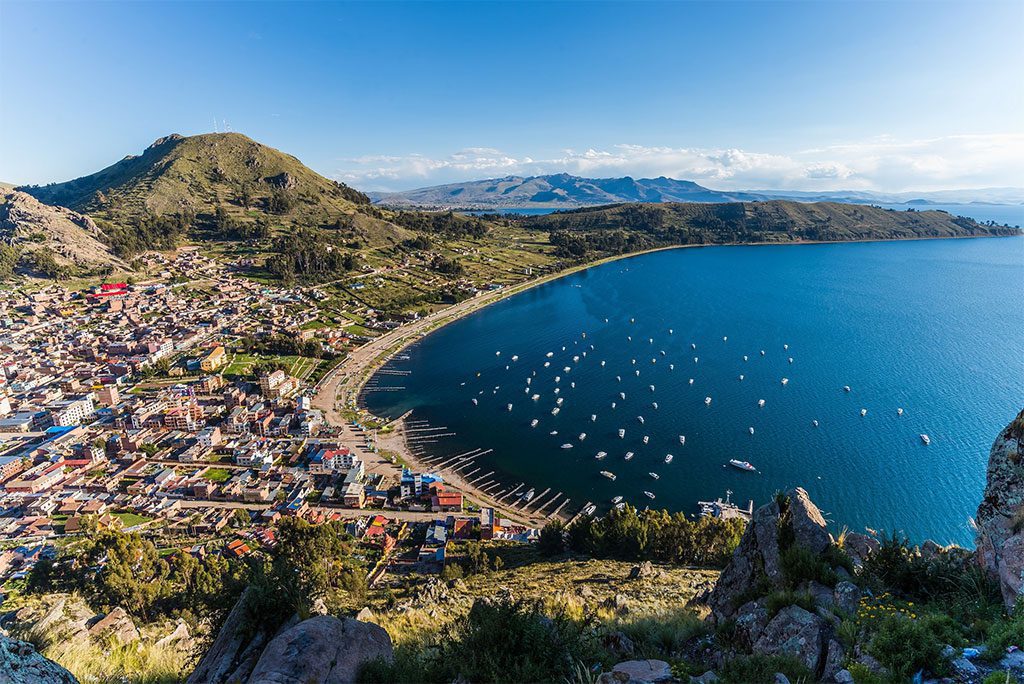Bolivia is a great option for those looking for a real South American experience. Located in the middle of the continent, this mountainous country is home to the highest navigable lake on the planet, as well as historic towns and beautiful cloud and rain forests.
Getting here is cheap and easy, and you’ll get a genuine glimpse into Bolivian life since it’s off the typical tourist trail. Some of Bolivia’s top attractions are described here.
10. Rurrenabaque
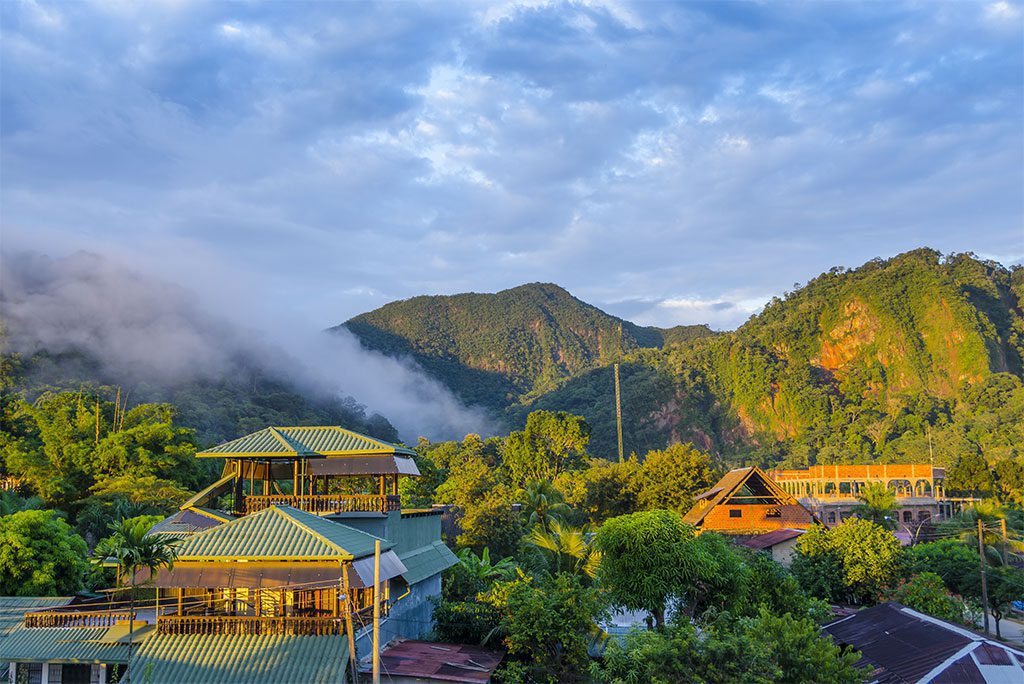
A stunning view of Rurrenabaque, Bolivia during sunrise. Image source: Elzbieta Sekowska/Shutterstock.com
Known simply as “Rurre,” the little village of Rurrenabaque is a popular destination for travellers with limited funds. Located on the Rio Beni, it serves as a departure point for a variety of jungle, pampas, and riverboat excursions that run anywhere from one to thirty days. Because the local Tacana lowlanders were among the few to oppose Christian missionaries, the town lacks a cathedral plaza and other Christian hallmarks. However, due to an influx of Western tourists, the local culture has shifted to reflect their preferences.
9. Coroico
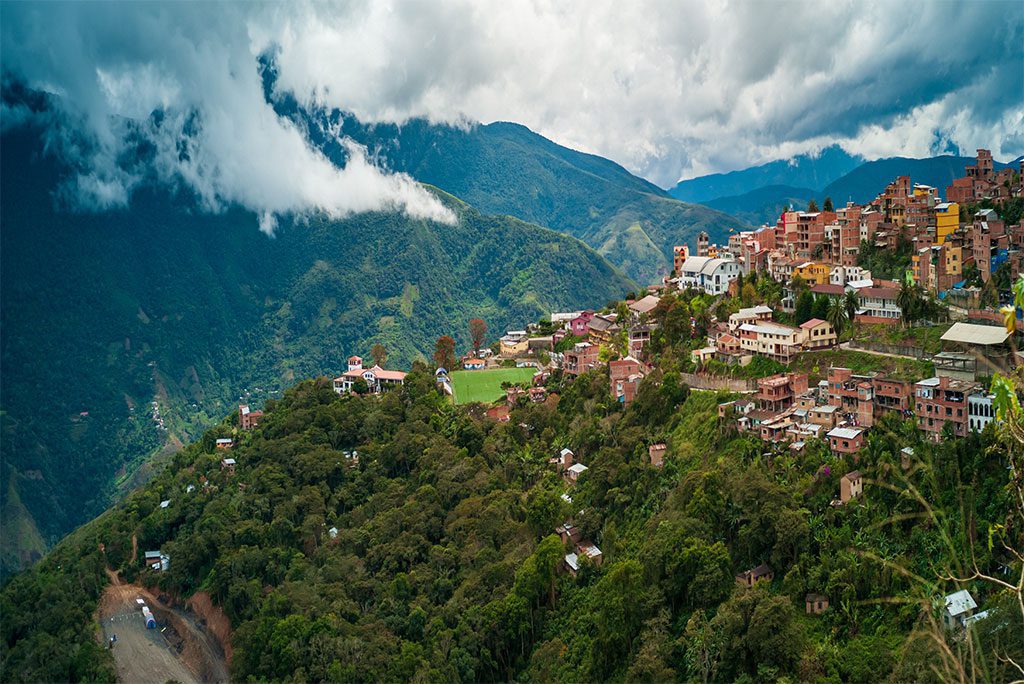
A picturesque view of the green hills in Coroico, Bolivia. Image source: Alexandre Laprise/Shutterstock.com
This town was given its name from a Quechua term for “golden hill,” thus the name. Thanks to its perch on the edge of the mountains, Coroico, a vacation town in the Andes, has a breathtaking panorama of verdant rainforest, tropical foothills, and snowy peaks. It is a fantastic place to stop en route to or from La Paz because of its pleasant climate and convenient location. The location is popular for extreme mountain riding, and it also has a number of beautiful walks leading to scenic waterfalls and hilltop vistas.
8. Sorata

A beautiful view of Sorata, a small town located in the La Paz region of Bolivia. Image source: DreamArt123/Shutterstock.com
The quiet village of Sorata, halfway between La Paz and Lake Titicaca, is a good starting point for those who wish to explore the nearby Cordillera Real mountains on foot. The Cordillera Real’s granite cliffs may be found on the Altiplano, the highest plains of the Andes. The tallest mountains in the range are above 20,000 feet in elevation, and there are six of them. In Sorata, hikers may get all the gear they need for their upcoming mountain expeditions.
7. Copacabana, Bolivia
There is a long tradition of religious pilgrims flocking to this tourist attraction on the beaches of Lake Titicaca. You may also enjoy the Incas’ beach and catch a boat to the nearby Sun and Moon Islands from here. Hikers and sightseers that go beyond the main tourist district will discover a variety of stunning Incan and colonial ruins, as well as some nice treks and excellent vistas.
6. Potosi
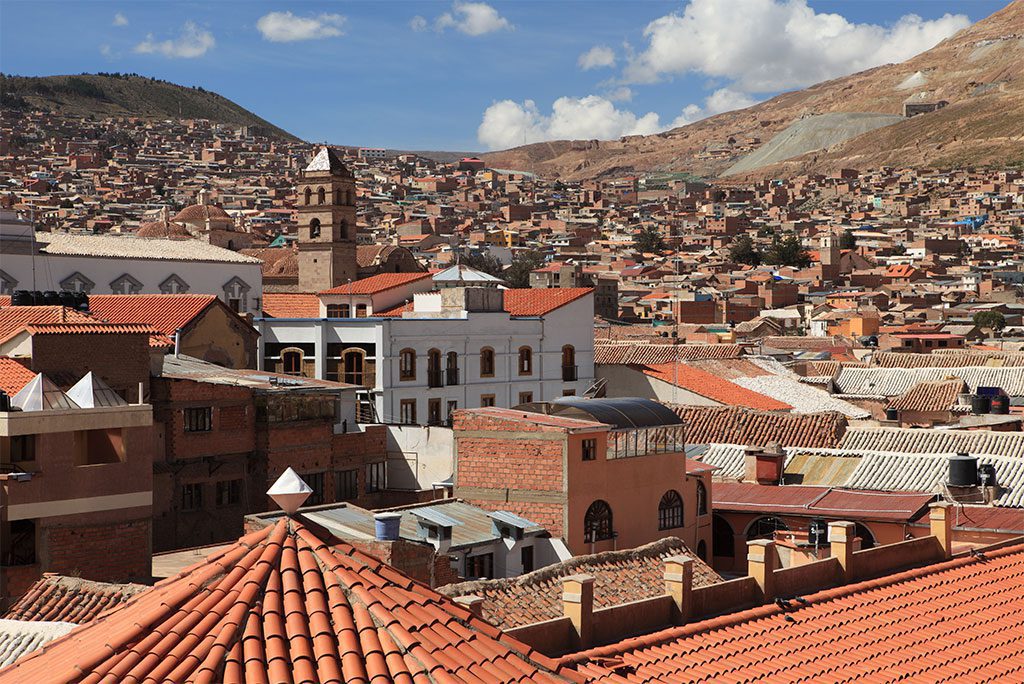
A stunning view of the town of Potosi in Bolivia. Image source: hecke61/Shutterstock.com
Aside from being one of the world’s tallest cities, Potosi was also one of the wealthiest until the conquistadors found it. Many tales state that the legendary city of silver had all the treasures the Spanish sought in El Dorado, with the exception that silver was discovered there instead of gold. Potosi is currently a popular tourist destination in Bolivia because of its kind and welcoming locals, beautiful colonial architecture, and exciting tours of the historic silver mines.
5. Sucre
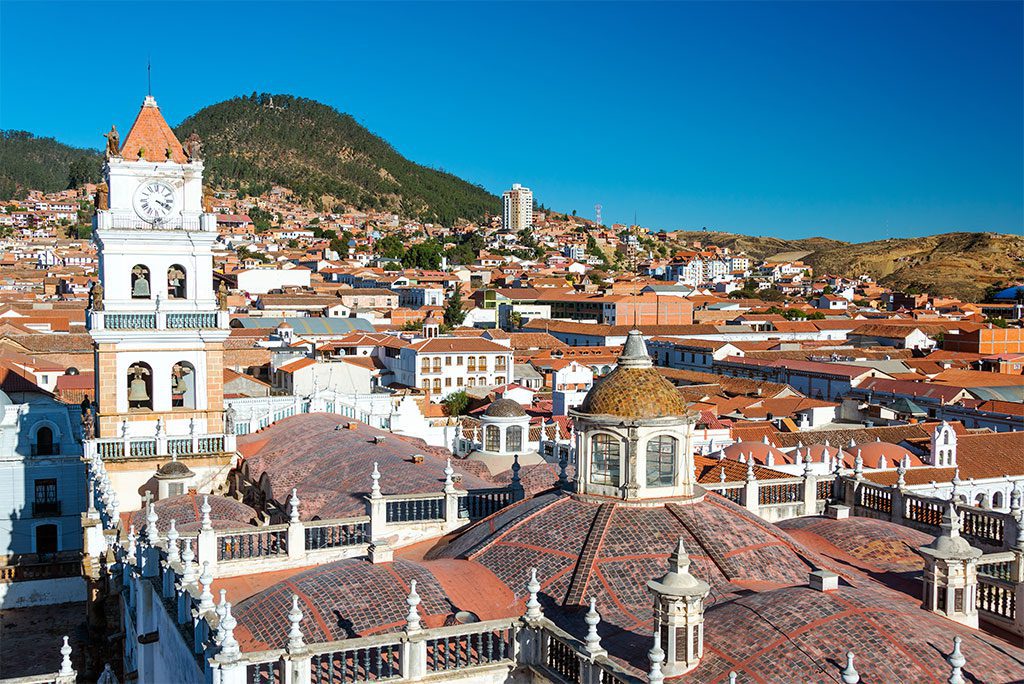
Sucre, Bolivia is known as “The White City” due to its white-washed colonial buildings. Image source: Jess Kraft/Shutterstock.com
When the country was a republic, the capital was located in Sucre, now known as “the White City” across South America. The buildings in the town’s core are whitewashed and well maintained. This is a prosperous and historic metropolis that owes much of its growth to Potosi. Visitors to Sucre may take in the city’s stunning architecture and museums, or go out for the day to see the region’s volcanic craters, dinosaur footprints, or seven waterfalls.
4. Oruro
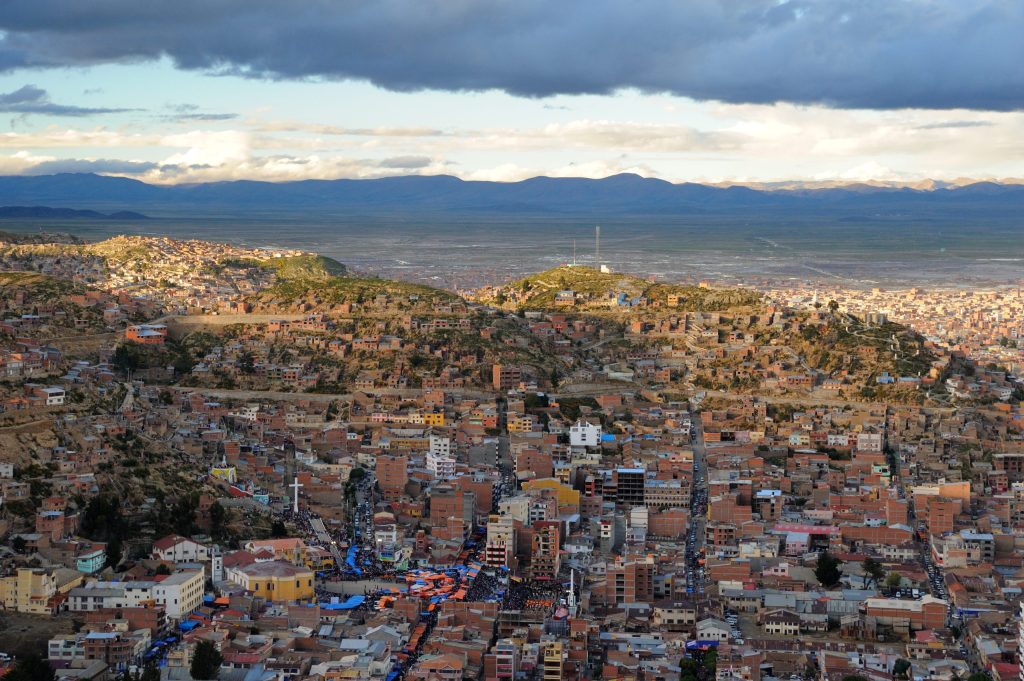
Oruro Carnival in Potosi, Bolivia. Image source: Andrey Gontarev/Shutterstock.com
One of the biggest cities in Bolivia, this mining community is well known for its extravagant carnival celebrations. At the event, hundreds of dancers and musicians showcase a wide range of cultural dances. Calle La Paz, an artisanal street where many of the festival’s costumes and masks are made, as well as tourist copies to carry home and exhibit, is a fantastic site to see the high plains outside of the festival season.
3. Tiwanaku
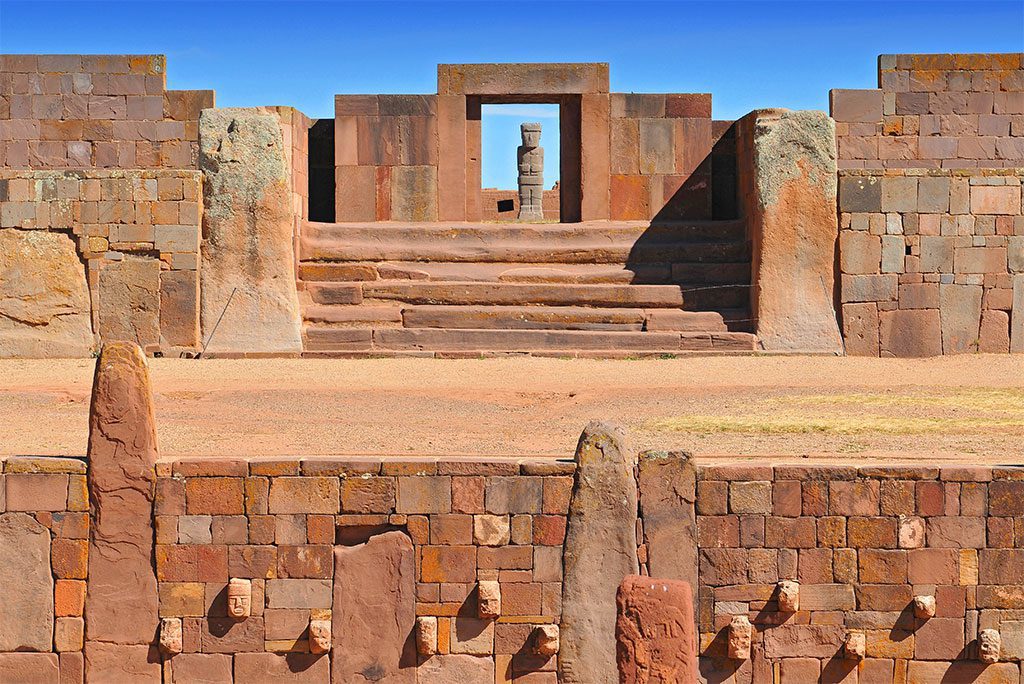
Temple Kalasasaya in Tiwanaku, Bolivia. Image source: Cezary Wojtkowski/Shutterstock.com
Located on the southern bank of Lake Titicaca, Tiwanaku was the capital of one of the most influential pre-Incan civilizations. Although archaeologists have only unearthed a tiny fraction of the city, they are certain that at its height, the population exceeded 20,000 people. As shown by archaeological digs, large adobe walls were used to divide the neighbourhoods where the people resided. Temples, a pyramid, massive gates, and sculptures of what seem to be extraterrestrial faces are just some of the other relics from Tiwanaku.
2. La Paz
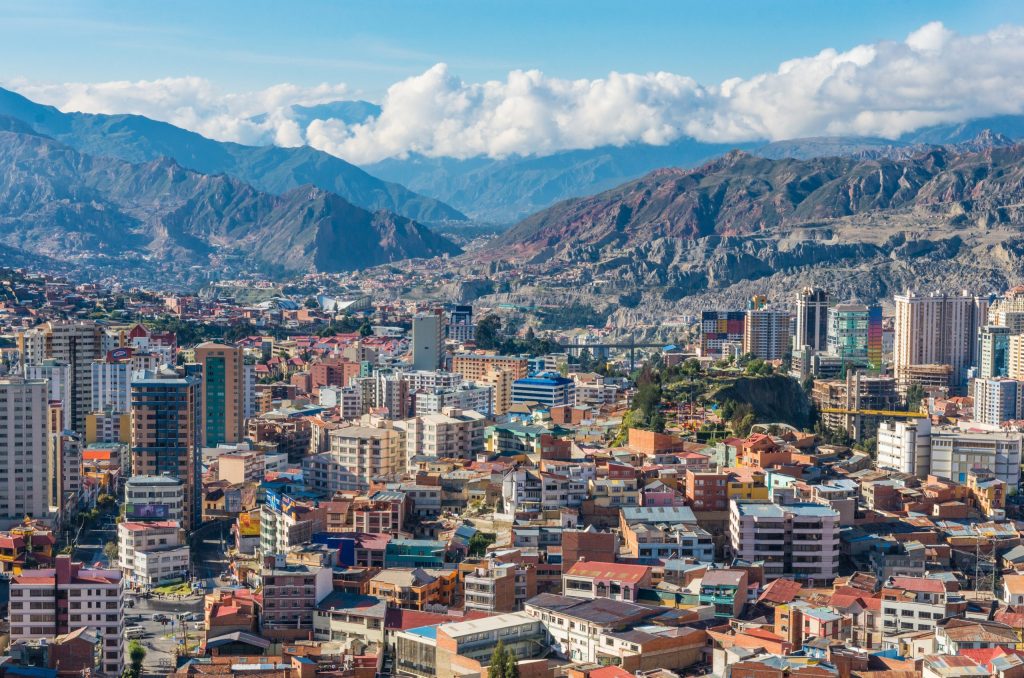
Aerial view of the cityscape of La Paz, Bolivia. Image source: Belikova Oksana/Shutterstock.com
Bolivia’s administrative capital is La Paz, while Sucre serves as the country’s constitutional hub. La Paz, the “de facto” capital of Bolivia, is perched on a series of steep hills at a height of around 3,650 metres (11,975 feet) above sea level. Flying into La Paz is an amazing experience. At first, the vast slums of El Alto come into view, followed by La Paz, hanging off the edges of what seems to be a gigantic hole in the ground.
1. Salar de Uyuni
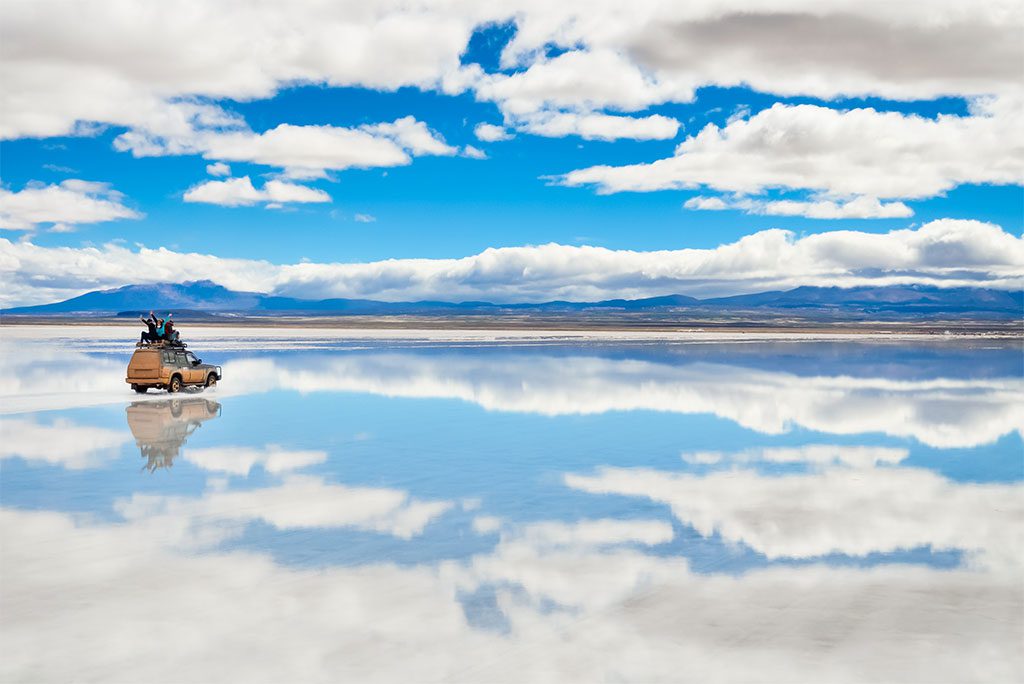
Reflection of the sky on the mirror-like surface of a salt flat. Image source: Olga Kot Photo/Shutterstock.com
The Salar de Uyuni is a massive salt flat in the Andes Mountains. All of the Salar’s surface is remarkably flat, with typical elevation changes of less than 1 metre (3 feet). During the dry season, the vastness of the salt provides a never-ending white panorama, but the place is at its most stunning when it is covered with water. It’s a weird and breathtaking scene when the blue sky is reflected in the salt, yet some visitors are insistent on viewing the salt.



